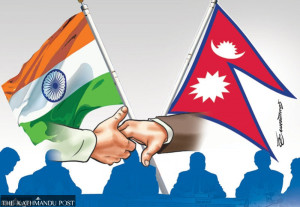Columns
Support academic book publishing
We have a mix of state-supported, commercial and non-profit academic publishing at work.
Pratyoush Onta
In my last column (March 31), I argued that regular publication of academic journals from different parts of the country was needed if we wanted to see robust institutional and geographical plurality in knowledge production in a federal Nepal. But what has been the state of plurality in the publication of academic books?
There have been many significant changes in the political architecture of the country following the promulgation of first the 1990 Constitution and then the most recent 2015 Constitution. However, despite these changes, the political economy of Nepal still mostly revolves around the political and financial power of Kathmandu. The same is true in academic book publishing.
Apart from seminar proceedings published by some university entities and a few translated volumes published by Lumbini Buddhist University, there have been no academic books published by universities located outside of Kathmandu. The same is true of commercial publishers based elsewhere in the country. Non-profit research entities located outside of Kathmandu have published various booklets related to their lines of work, but they are mostly absent from book publishing. One exception to this trend is the Lumbini International Research Institute which has published several dozen books on Buddhist themes.
State-supported entities
For analytic convenience, let us differentiate Kathmandu-based academic publishers into state-supported entities, for-profit commercial outlets, and not-for-profit organisations. Among the state-supported entities, there have been two major players: Sajha Prakashan and the Nepal Academy. Sajha’s main focus has been on literary works but it has also published some sociological and historical academic books. However, years of mismanagement have bankrupted the institution.
The Nepal Academy has published many academic books in recent years. However, the peer-review process that went into their making is opaque and some of the output is embarrassing. Take for instance, the book Itihas Siromani Baburam Acharya edited by Ganga Prasad Uprety. Published in 2016 when Uprety was the academy’s chancellor, some of the chapters in this book are fully referenced with academic citations and footnotes. In other chapters, references are provided at the end but they are not cited in the main text. In at least two chapters, there are neither footnotes nor references. When I talked to two accomplished historians who contributed to this volume, they told me that they never got to see the final proofs of their chapters before the book went into printing! That single fact tells you a lot about the lack of quality control mechanism at the academy and how, as commented by others as well, it has failed to uphold high standards in the making of academic books.
Commercial publishers
Around the turn of the century, the most successful commercial publishers made money by publishing textbooks for private school students. They also published a few academic works on the side to add prestige to their publication portfolio. Ekta Books excelled in this game. Some publishers focused on mostly social science publications in English. Notable here is Mandala Book Point whose work as a publisher became more prominent after it put out Anthropology of Nepal edited by Michael Allen in 1994. But Mandala never graduated to the next level by enhancing its copy editing and peer reviewing organisational capacities. In the past decade and half, Vajra Publications has put out quite a few academic books with great production quality (pleasant layout, attractive cover and excellent print quality). However, copy editing and peer reviewing are still mostly taken care of by the editors and authors themselves, not by Vajra.
Older publishers such as Ratna Pustak Bhandar and Educational Book House continue to publish new books and reprints of some classics of Nepal Studies. Some of the new successful commercial publishers (who mostly put out books in Nepali) have only occasionally ventured into academic publishing. Their main focus is to publish books that are of interest to a general audience. Hence, the value addition that publishers make to academic book manuscripts are still missing in the work domain of our commercial publishers. To up their game, they will need to recruit copy editors, either as in-house staff members or as freelancers. But they cite the limited size of the academic book market in Nepal to justify their inability to make such investments permanently.
Non-profit publishers
If the market to support academic books does not yet exist in Nepal, then the work of publishing such books will have to rely on non-market funds as well. There is nothing wrong with this practice since even in mature academic book markets (for example, the United States), some books are published with subventions from public or private sources.
In the Nepali context, some non-profit publishers have accessed such funds. Martin Chautari, the organisation where I work, has now put out more than 110 books in the past 22 years. Many of these books have emerged from research projects done at the institution. Hence, they have benefited from grants that have paid for the copy-editing time of in-house or external editors. Occasionally, Martin Chautari has published books that are independent of such projects but are of value for public knowledge. Nepali Itihasko Paribes (2021) by historian Mahes Raj Pant is one recent example. Another important non-profit publisher is Social Science Baha whose books are put out via Himal Books.
Martin Chautari enhances the contents of its books in three sequential phases. Initially, this involves generating the right impetus for the creation of the book by an author or editors. Second, once the draft of the manuscript becomes available in part or full, its contents are peer-reviewed. As is the case with academic presses elsewhere, review reports usually ask for revisions in the manuscripts to be done by their authors. Third, once the final manuscript is ready, a copy editor works closely with the author/editors to enhance its quality. This involves minor revisions and cleaning up of the text in multiple ways. For example, in the case of the above-mentioned book by Pant, some of the chapters were revised up to eight times based on the consultations between the author and the copy editor Lokranjan Parajuli.
While the number of Nepali non-profit organisations engaged in publishing of academic books is rather small, they have managed to push their books into the mainstream of book publishing in Nepal as far as social science genres are concerned. Through their commitment to excellent print quality and by engaging peer reviewers and copy editors, such publishers have intervened in the academic public sphere in important ways.
As reported here, we have a mix of state-supported, commercial and non-profit academic publishing at work. If the output from state-supported institutions is shoddy, then members of the public ought to demand that their money should either produce better quality works or it should go to other institutions with a better track record. If returns from book sales cannot support the publication of many academic books, then clearly the production of some such books requires a system of support from private and public funds. The private sector’s support for academic publishing through corporate social responsibility funds could be easily arranged if the orientation toward the use of such funds is revised. Also setting up a functional mechanism to channel public money to support universities and non-profits to publish academic books would be an excellent idea.




 12.12°C Kathmandu
12.12°C Kathmandu















